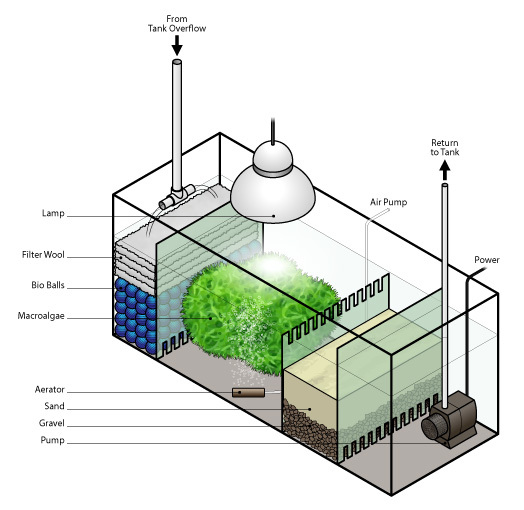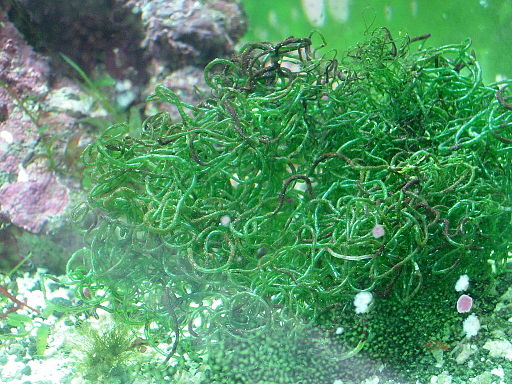Algae Scrubber vs Refugium: Which Is Best?
Posted by on 3/13/2023
Both algae scrubbers and refugiums have seen use in freshwater, saltwater, and brackish aquariums. Scrubbers and refugiums both provide methods for purification, oxygen exchange, and other beneficial purposes, but which is the best choice?
While we've seen their use in a variety of different fishkeeping environments, their usage is perhaps the most important in the saltwater aquarium hobby, particularly in reef keeping, where stable water parameters are a must for keeping delicate corals and tank inhabitants.
In this post, we'll summarize the key differences between these aquarium appliances, and we'll also provide recommendations on which option might be best for different types of hobbyists.
January's Giveaways on Light Fish
Algae Scrubber
Algae Scrubbers were first invented in the 1970s, by botanist Dr. Walter Adey . Dr. Walter theorized that large amounts of algae would consume nutrients much faster than they were being introduced in environments such as ponds and lakes. To test this theory, Dr. Walter built his patented algae scrubber.
Algae scrubbers are small containers covered by an LED lid with connected air tubing. The environment inside the container serves as the perfect environment for algae to grow. As the algae continue to grow inside the scrubber, it consumes harmful compounds such as nitrates, phosphates, and other pollutants directly from the water column.
Modern-day algae scrubbers have a much different design than the originals by Dr. Walter Adey. There are two distinct designs, internal algae scrubbers - which are placed directly in an aquarium sump, and external algae scrubbers, which can be mounted to a wall or placed above the sump inside your aquarium stand. While the designs have become much sleeker, and come equipped with splash-resistant materials, they function much or less the same.

Refugium
The word "refugium" as defined by Merriam-Webster
"An area of relatively unaltered climate that is inhabited by plants and animals during a period of continental climatic change (such as a glaciation) and remains as a center of relict forms from which a new dispersion and speciation may take place after climatic readjustment"
Although this definition isn't exactly what hobbyists mean when they mention refugiums in fishkeeping, the appliance they're referring to serves a similar purpose. Refugiums are typically large containers placed underneath a display tank. By the simplest definition, a fishkeeping refugium is an area of the tank free from predators that can be illuminated by a light fixture, or completely dark.
Hobbyists typically use refugiums for two purposes - to grow different types of macroalgae, which in turn consume pollutants from the water column. Or, as a dedicated area to grow different types of live fish food, such as copepods, mysis shrimp, and brine shrimp. There are a few different styles of refugiums. Hang-on-back refugiums, which as you may have guessed - hang on the back of a tank, and sump refugiums, which are essentially partitioned sumps with a dedicated compartment serving as a refugium.
In most cases, the HOB (hang-on-back) refugiums are sold with a light fixture, while sump refugiums require a light fixture to be purchased separately, depending on whether or not a light fixture is needed.
As you can see, if you choose to grow macro algae in a refugium, it functions similarly to an algae scrubber. So which should you choose? We'll recommend some options for a few different scenarios below.

Best for Hobbyists on a Budget
If you're looking for the best choice that's light on the wallet, we recommend a refugium rated for your aquarium size. Refugiums can be used to grow macroalgae, such as chaeto (scientific name: chaetomorpha), which will give you most of the algae purification benefits you'd receive from an algae scrubber.
Plus, many refugiums are sold as sumps, and some include a light fixture. So you're essentially purchasing a sump, refugium, and an algae-growing light fixture all in one...not bad! Refugiums also add much more water volume to your aquarium setup, meaning your tank water will be more stable. Since stability is arguably the most important part of fishkeeping, refugiums are a great value purchase.

Best for Reef Tanks
If you're building out your dream reef tank and plan on adding corals such as brain corals, chalices, torches, or anemones like the black widow, then you'll greatly benefit from owning both an algae scrubber and a refugium.
Although it's an expensive decision, having a refugium and algae scrubber gives you the best of both worlds. Your algae scrubber will provide a great environment for waste-absorbing algae to grow, and your refugium can be used to grow additional algae or live fish food.
For many reef keepers, this is the ideal setup, just make sure you have enough space to properly lay everything out in your aquarium stand, the last thing you'll want to replace is a damaged algae scrubber!
Best Option for Sensitive Fish
If you plan on housing difficult-to-care-for fish, such as a Leopard Wrasse, Butterflyfish, or Green Mandarin, then, just like a reef tank, your best option is to have both an algae scrubber and a refugium.
Having both appliances gives you a larger volume of water for more stability, the detoxifying benefits from growing algae, and a dedicated space to grow live fish food, such as copepods. For hobbyists that can only pick one of the two, the refugium would be the better choice, but if you've decided on housing difficult-to-care-for fish, then you should already be well aware of how sensitive these species are to sudden changes in water chemistry.
Best Option for Breeders
Many saltwater fish readily breed in captivity. Yellow Watchman Gobies and Orange Spotted Gobies are just a few examples, and veteran breeders are already familiar with one of the most difficult steps in breeding - raising the fry. You'll need to feed young fish a specialized diet, and later transition them to adult food.
Due to a refugium's ability to serve as a dedicated environment for raising live foods such as copepods and mysis shrimp, a refugium is the best option for future and current breeders.
Breeding can offset some of your aquarium costs, and you can even sell some of your livestock on our marketplace to make some extra cash.
Conclusion
Now that we've discussed the ins and outs of refugiums and algae scrubbers, which do you plan on adding to your aquarium? If you have an unlimited budget, both will provide many benefits to an aquarium, but for those of us looking to save a few bucks, a refugium sump is most likely the way to go.
Let us know what kind of equipment you use by commenting below, and be sure to visit our marketplace and community forum where you can meet and connect with other saltwater aquarium hobbyists.
January's Giveaways on Light Fish


